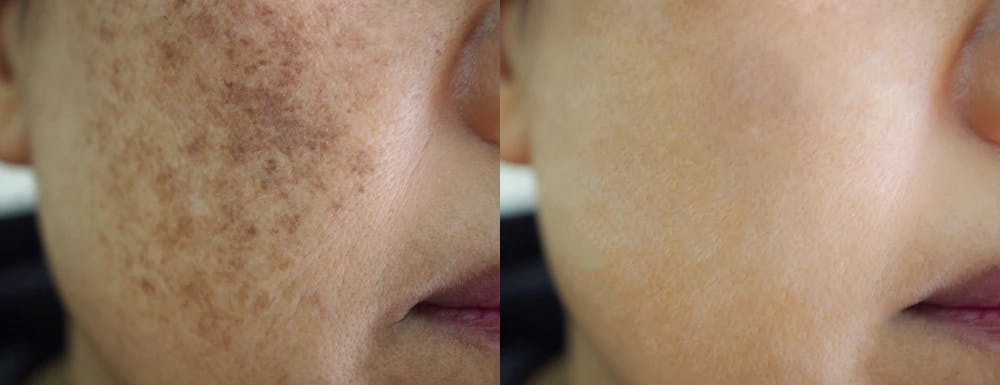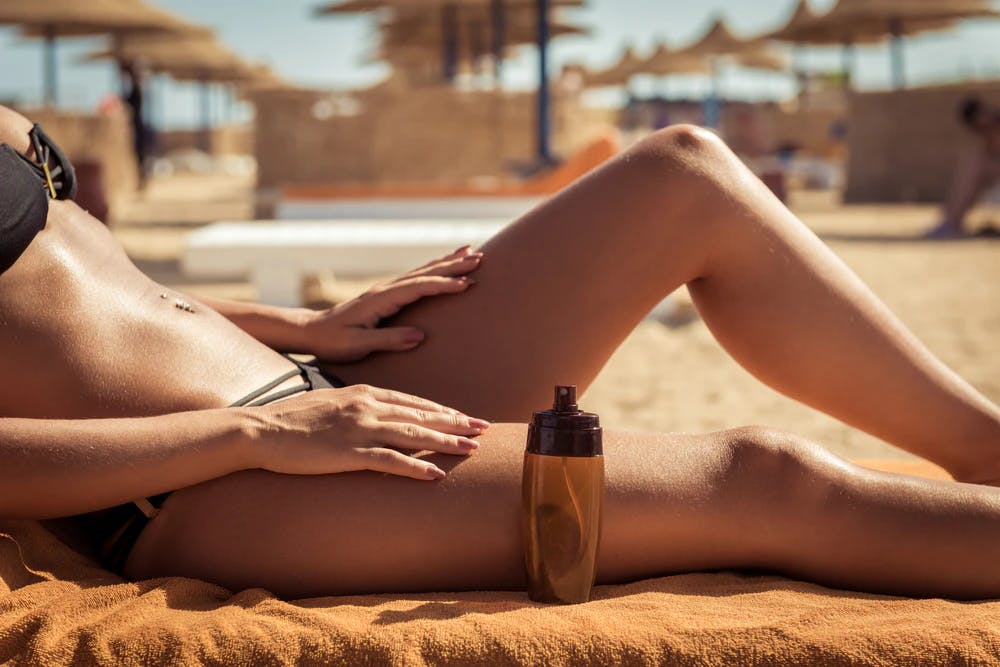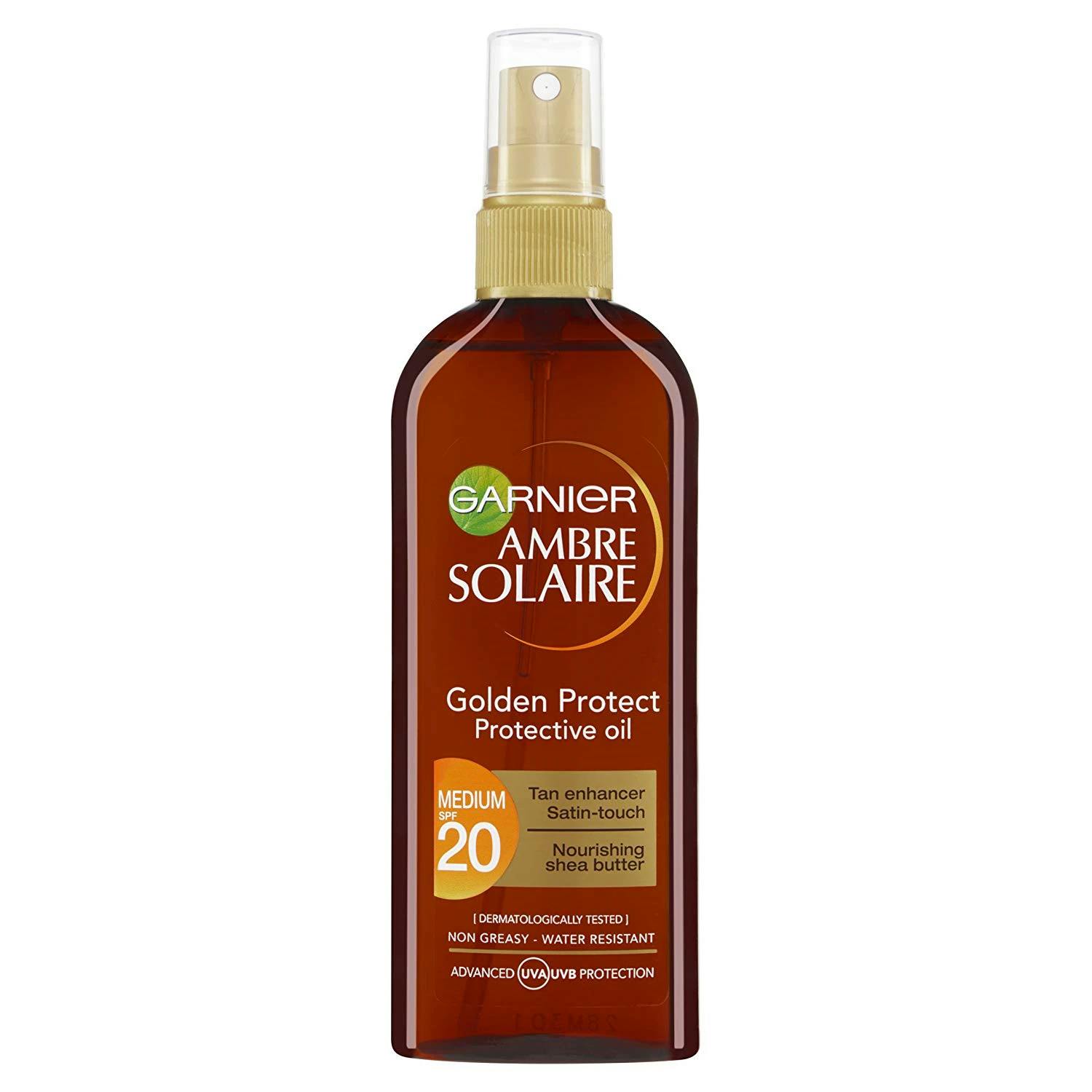Everything You Need To Know About Tanning
Summer has just arrived, so the wait is over! However, there are plenty of things to take into consideration before you fake or bake your tan.

Beach time is just around the corner, and you're more than excited about the hot summer days spent under the sun. Who can resist the warmth on your skin, sand under your feet, and wind in your hair? Moreover, you can't wait to get back from vacation and stroll down city streets with golden legs glowing, and who can blame you? Everything looks better with a little extra color.

However, the truth we would all like to keep undercover is that there's no such thing as a "healthy tan." But, since we know this won't stop any of us from getting that sun-kissed body, we prepared a summer guide to everything you need to know about tanning.
There's no such thing as a healthy tan.
Healthy Skin Routine
Apart from the direct sunbathing and sunless tanning, there are plenty of ways the sun can have negative effects on your skin. This is why you need to dedicate a considerable amount of time, energy, and money to diligent and quality skin care 365 days a year, and not only in the peak season.
Also, it doesn't matter how old you are, without the right care, your skin is prone to all sort of diseases and unwanted aging. Adopt an easy and effective sun care routine in accordance with your complexion and age, and your skin will be thanking you for the rest of your life.
How Much Sun Exposure Is Enough?
As we've just mentioned above, there's no such thing as healthy tanning, but there is a healthy moderation in everything. You would be surprised to find out that you only need 15 minutes daily of sun exposure for adequate Vitamin D, provided you're eating well and diversely.
You only need 15 minutes daily of sun exposure for adequate Vitamin D.

While sunbathing requires more time, it's critical to gradually adapt your skin to the sun over two to three weeks, by exposing it to moderate UV radiation. How much sun is enough or too much depends on your skin type, but the general maximum amount for direct sun exposure is about 60 minutes.
Possible Consequences
Everyone is aware of the risks of too much sun or excessive use of tanning beds, but barely anyone talks about the general risks of any sun exposure throughout the year. Even in spite of careful and moderate summer tanning, you should not neglect your skincare routine once you throw away your worn out flip-flops and put your bikinis away. During your daily activities, even on cloudy days, you are constantly exposed to harmful UV rays.
Even on cloudy days, you are constantly exposed to harmful UV rays.
Excessive sun exposure can lead to unwanted wrinkles, breaking down collagen, and most alarmingly, it can increase the chances of developing skin cancer. According to the American Academy of Dermatology, around 90% of skin cancers are caused by the sun's damaging rays.

On the other side, sunbathing to "normal" extents can also have negative effects on your skin - it can cause sun spots and can darken already existing scars. Be aware of all the possible risks and ways to treat them, so you'll be ready to react before things go too far.
Sunscreen Products: What To Use and What To Avoid
Every summer we're provided with plenty of new skin protection products, from delicious smelling ones to anti-cellulite lotions and chic butters - the options are abundant. However, in order to guarantee the best protection, do a little research on which sunscreens to use and which to avoid this season, but for a safe option, opt for broad-spectrum protection with at least SPF 30, regardless of your skin tone or how appealing those other products look or smell. Make sunscreen a regular part of your routine and apply it 15 minutes before direct exposure, so it has enough time to soak into the skin and serve its purpose. It's also advised to reapply every 2 hours for maximum coverage.
Tanning Oils

If you're looking to achieve a golden tan, as everyone else is, you'll need some time in the sun and, in most cases, some assistance from tanning oils. They feel smooth, keep your skin moisturized and ready to absorb the sun, and get you tan.

For better protection, opt for one of the many products with SPF, such as Ambre Solaire Golden Protect Sun Oil SPF20, Hawaiian Tropic SPF8 Protective Dry Spray Oil or Sun Bum Moisturizing Tanning Oil SPF15. Lather up for a day at the beach, and expect that stunning glowing color in no time.
Closing Thoughts
Take a note of the list above and prepare to enjoy this season safely and soundly. A beautiful tan and healthy skin are not mutually exclusive - all you need is a little research, good prep, and some motivation to keep both your beauty and your health under control.